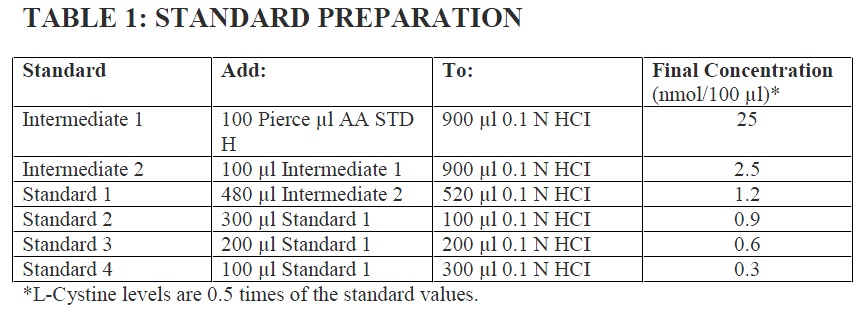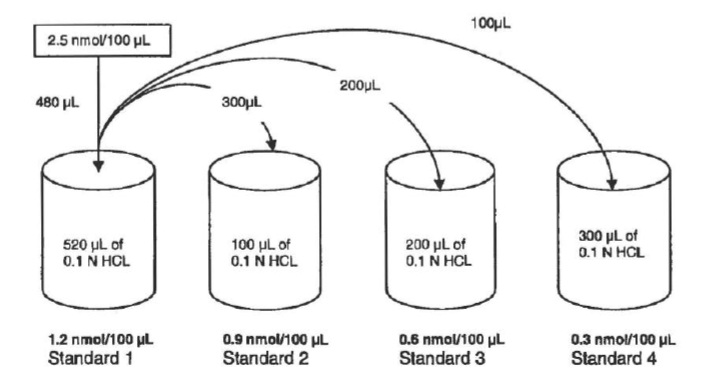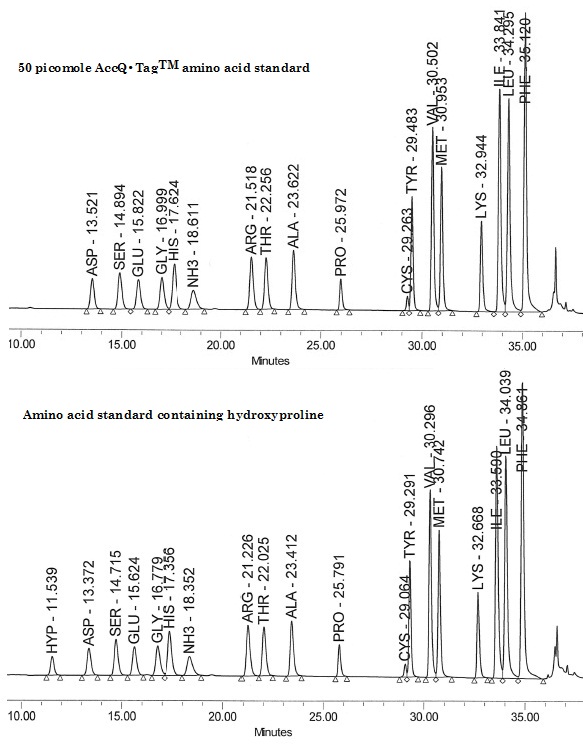How do you calibrate an amino acid analyzer?
For the calibration of an automated amino acid analyzer typically a mixture of free amino acids (AAs) in defined amounts is used as a standard solution to create needed calibration curves allowing for accurate quantitative amino acid analysis.
Creation of calibration curves for amino acid standards
Amino acid analysis is a testing method that allows for the quantification of the amino acids content in biological samples. Typically, biological samples that contain free amino acids, peptides and proteins are analyzed. During a typical amino acid analysis of a peptide or protein sample the sample is hydrolyzed to break down the peptide or protein into the individual amino acids. After hydrolysis and derivatization of the free amino acids the use of amino acid analysis allows to determine the components, the identities and the relative quantities of the released amino acids. This typically done with reversed phase high performance liquid chromatography (HPLC). A quantitative amino acid analysis needs to be sensitive and reliable for both the derivatization reaction and the analytical technique. In our case this is achieved with pre-column derivatization using the AccQ·Tag derivatization reagent from Waters and automated, online HPLC analysis with fluorescence detection.
PREPARATION OF AMINO ACID STANDARD SOLUTIONS
Do create calibration curves for amino acids found in proteins amino acid standards (Pierce AA Stds) were purchased from Sigma (Saint Louis, MS, USA). The amino acids were derivatized with AccQ•Tag reagents according to the manufacturer’s protocol. Briefly, 10 μL of a standard amino acid mix solution were mixed with 70 μL of AccQ•Tag Ultra borate buffer, and 20 μL of AccQ•Tag reagent previously dissolved in 1.0 mL of AccQ•Tag Ultra reagent diluent were added. The reaction was allowed to proceed for 10 min at 55 °C. The dynamic range, high limits of linearity, low limits of linearity, and detection limits for AccQ•Tag amino acid derivatives can be obtained from calibration curves that are produced using solutions of standard amino acid mixers. To get accurate results freshly prepared amino acid standard solutions containing the appropriate amounts of amino acids should be used. Table 1 shows an example how this is done.

Note: To perform internal calibration, the appropriate amount of norleucine is added to both the standard and the sample solutions.

Figure 1: Example of a dilution scheme to prepare the appropiate amino acid standard solutions. For different types of amino acid analyzers different solvents may need to be selected.

Figure 2: Two typical chromatograms of amino acid mixtures containing 50 picomoles each derivatized with AccQTag are shown here.
LINEARITY AND SENSITIVITY
The linearity for the Waters Breeze Amino Acid Analysis (AAA) protocol is demonstrated for the range of 10 pmoles to 600 pmoles, using amino acid standards. The figures below show calibration curves 18 amino acids found in proteins. The lower limit of detection is below 5 picomoles per amino acid injected, however for improved accuracy our normal detection range is in the range between 10 to 600 picomoles.
CALIBARATION CURVES


